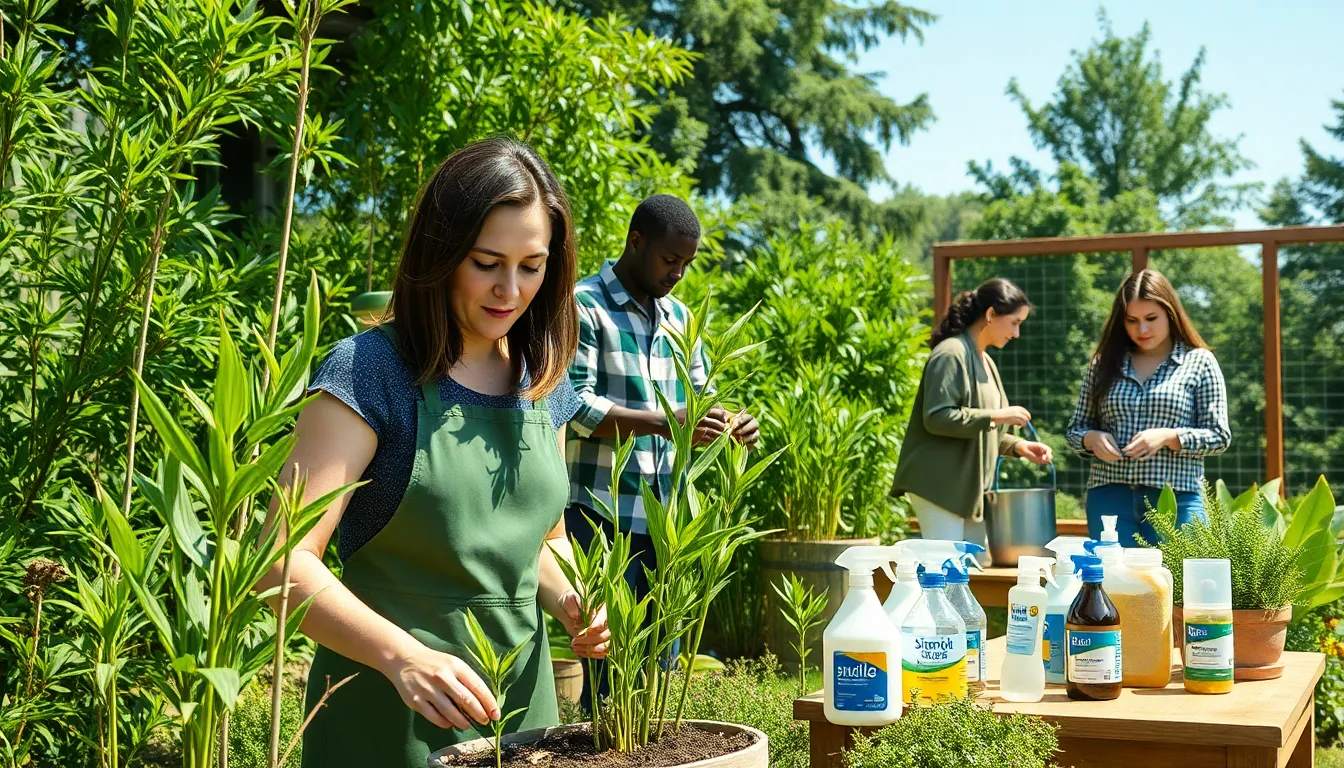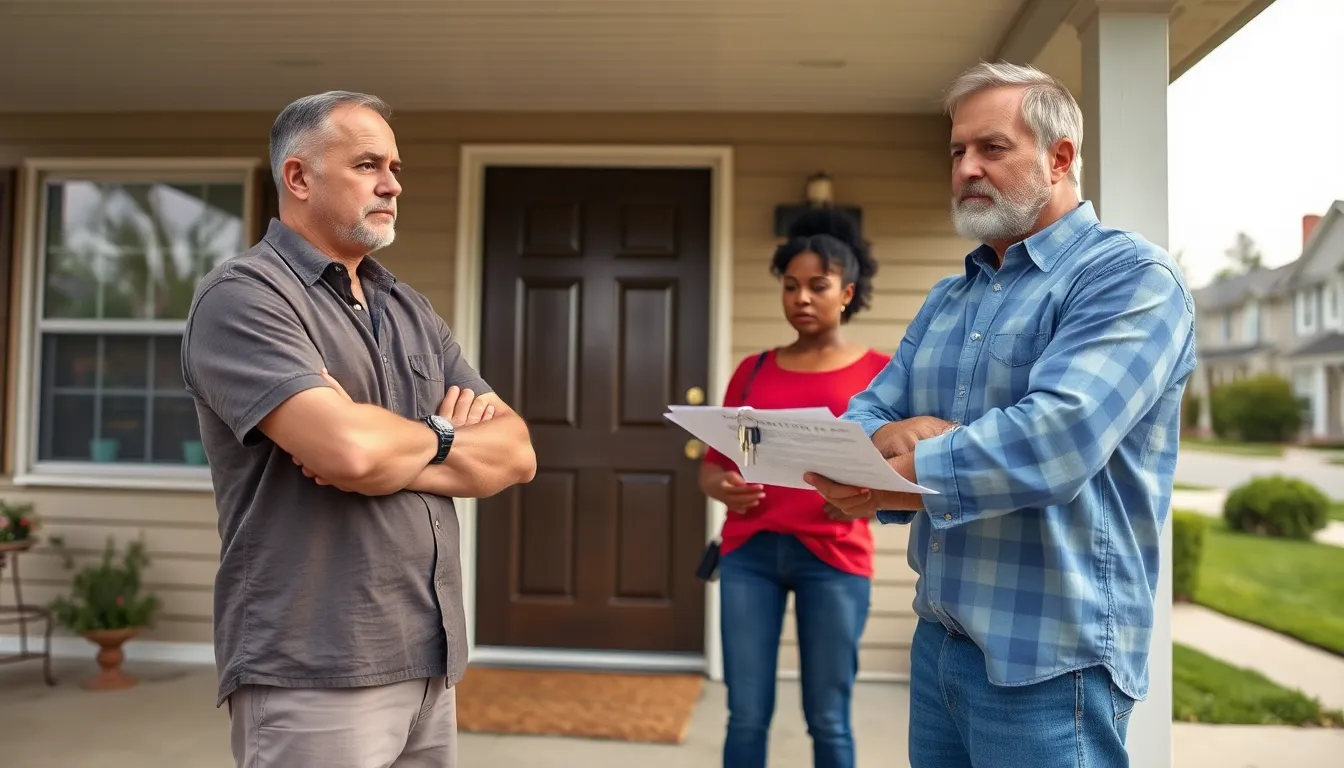As the world becomes increasingly aware of environmental issues, eco-friendly maintenance is gaining traction. This approach not only focuses on preserving the planet but also enhances the longevity and efficiency of homes and businesses. By adopting sustainable practices, individuals can reduce their carbon footprint while maintaining their properties in a responsible way.
Eco-friendly maintenance encompasses various methods, from using non-toxic cleaning products to implementing energy-efficient systems. It encourages a shift towards greener alternatives that benefit both the environment and personal well-being. With a little creativity and commitment, anyone can contribute to a healthier planet while enjoying the advantages of a well-maintained space.
Table of Contents
ToggleWhat Is Eco-Friendly Maintenance?
Eco-friendly maintenance refers to practices that promote environmental sustainability while maintaining homes and businesses. This approach prioritizes using sustainable materials, minimizing waste, and reducing harmful emissions. It integrates practices that work to enhance the longevity and efficiency of properties without compromising environmental health.
Key Elements of Eco-Friendly Maintenance
- Sustainable Materials: Eco-friendly maintenance utilizes bamboo, recycled steel, and reclaimed wood. These materials reduce resource depletion and promote responsible consumption.
- Non-Toxic Products: Non-toxic cleaning products eliminate harmful chemicals. By opting for biodegradable or plant-based cleaners, individuals ensure healthier living spaces and decreased pollution.
- Energy Efficiency: Eco-friendly maintenance incorporates energy-efficient systems, such as LED lighting and Energy Star-rated appliances. These technologies lower energy consumption and reduce greenhouse gas emissions.
- Water Conservation: Water-saving fixtures, like low-flow showerheads and dual-flush toilets, significantly decrease water usage. Implementing these devices directly impacts overall environmental conservation.
- Waste Reduction: Eco-conscious practices encourage recycling and composting. Reducing landfill waste leads to lower carbon emissions and fosters a sustainable ecosystem.
Adopting eco-friendly maintenance enhances property efficiency while contributing to environmental protection. Such practices create a sustainable lifestyle that benefits individuals and the planet.
Benefits of Eco-Friendly Maintenance

Eco-friendly maintenance offers numerous advantages for individuals and the environment. Sustainable practices not only preserve natural resources but also enhance property efficiency and reduce costs.
Environmental Impact
Eco-friendly maintenance significantly lowers environmental degradation. It reduces waste through recycling, composting, and the responsible disposal of materials. Sustainable materials, like bamboo and recycled steel, diminish resource depletion and promote renewable alternatives. Using non-toxic cleaning products minimizes the release of harmful chemicals into ecosystems. Energy-efficient systems, such as LED lighting and Energy Star-rated appliances, cut down on energy consumption. These practices collectively help mitigate climate change by reducing carbon emissions and preserving biodiversity.
Cost Savings
Eco-friendly maintenance leads to considerable cost savings over time. Energy-efficient systems often result in lower utility bills; for example, switching to LED bulbs can reduce energy usage by up to 75%. Water conservation fixtures, like low-flow faucets and toilets, reduce water bills, providing immediate financial relief. Using sustainable materials may entail higher initial costs but offers longevity and reduces the need for frequent replacements. Moreover, many eco-friendly practices qualify for tax incentives or rebates, further easing financial burdens. By adopting these practices, property owners can save money while contributing to environmental sustainability.
Methods of Eco-Friendly Maintenance
Implementing eco-friendly maintenance involves utilizing sustainable practices that enhance property value while protecting the environment. Below are two key methods to achieve eco-friendly maintenance.
Sustainable Materials
Using sustainable materials reduces environmental impact significantly. Options include:
- Bamboo: A rapidly renewable resource, bamboo thrives without pesticides, contributing to a lower carbon footprint.
- Recycled Steel: With its durability and recyclability, recycled steel minimizes energy consumption in manufacturing and limits waste.
- Reclaimed Wood: Sourcing reclaimed wood repurposes existing materials, reducing deforestation and preserving natural habitats.
- Low-VOC Paints: Selecting low-VOC (volatile organic compounds) paints improves indoor air quality while reducing harmful emissions.
Choosing these materials promotes environmental responsibility and enhances the longevity of structures.
Energy-Efficient Practices
Implementing energy-efficient practices boosts efficiency and minimizes energy consumption. Effective options include:
- LED Lighting: Switching to LED bulbs reduces energy usage by up to 75% compared to traditional incandescent bulbs.
- Smart Thermostats: Utilizing smart thermostats enables precise temperature control, optimizing heating and cooling schedules for maximum efficiency.
- Energy Star Appliances: Installing Energy Star-rated appliances supports reduced energy consumption and lowers utility bills significantly.
- Insulation Upgrades: Improving insulation enhances temperature regulation, leading to reduced energy waste and improved comfort.
Adopting these energy-efficient methods results in substantial cost savings and decreases overall environmental impact.
Challenges in Implementing Eco-Friendly Maintenance
Implementing eco-friendly maintenance presents certain challenges, particularly in initial costs and knowledge gaps. These obstacles often hinder the widespread adoption of sustainable practices.
Initial Costs
Initial costs often deter individuals and businesses from adopting eco-friendly maintenance. Sustainable materials, such as bamboo or recycled steel, typically have higher upfront prices compared to conventional options. Installation of energy-efficient systems, like smart thermostats and LED lighting, may also involve significant investment. While these expenses can lead to long-term savings on utility bills, the financial burden at the outset may discourage immediate action. Many potential practitioners overlook available incentives, grants, or financing options designed to offset these costs.
Knowledge and Training
Knowledge and training gaps pose additional challenges in implementing eco-friendly maintenance. Many individuals lack awareness of sustainable materials and practices, leading to a reluctance to change traditional methods. Without expert guidance, it’s difficult to determine the most effective solutions for specific situations. Training sessions, workshops, or partnerships with environmentally conscious contractors can address these knowledge gaps, equipping individuals with the necessary information to implement eco-friendly practices effectively. Accessing reliable resources ensures that maintenance methods align with sustainability goals.
Embracing eco-friendly maintenance is a vital step towards a sustainable future. By integrating sustainable materials and energy-efficient practices, individuals and businesses can significantly reduce their environmental impact. The benefits extend beyond ecological preservation, as these methods also lead to cost savings and improved property efficiency.
Overcoming challenges such as initial costs and knowledge gaps is essential for a successful transition. With the right resources and commitment, anyone can adopt these practices and contribute to a healthier planet. The journey toward eco-friendly maintenance not only enhances living and working spaces but also fosters a sense of responsibility towards the environment.








